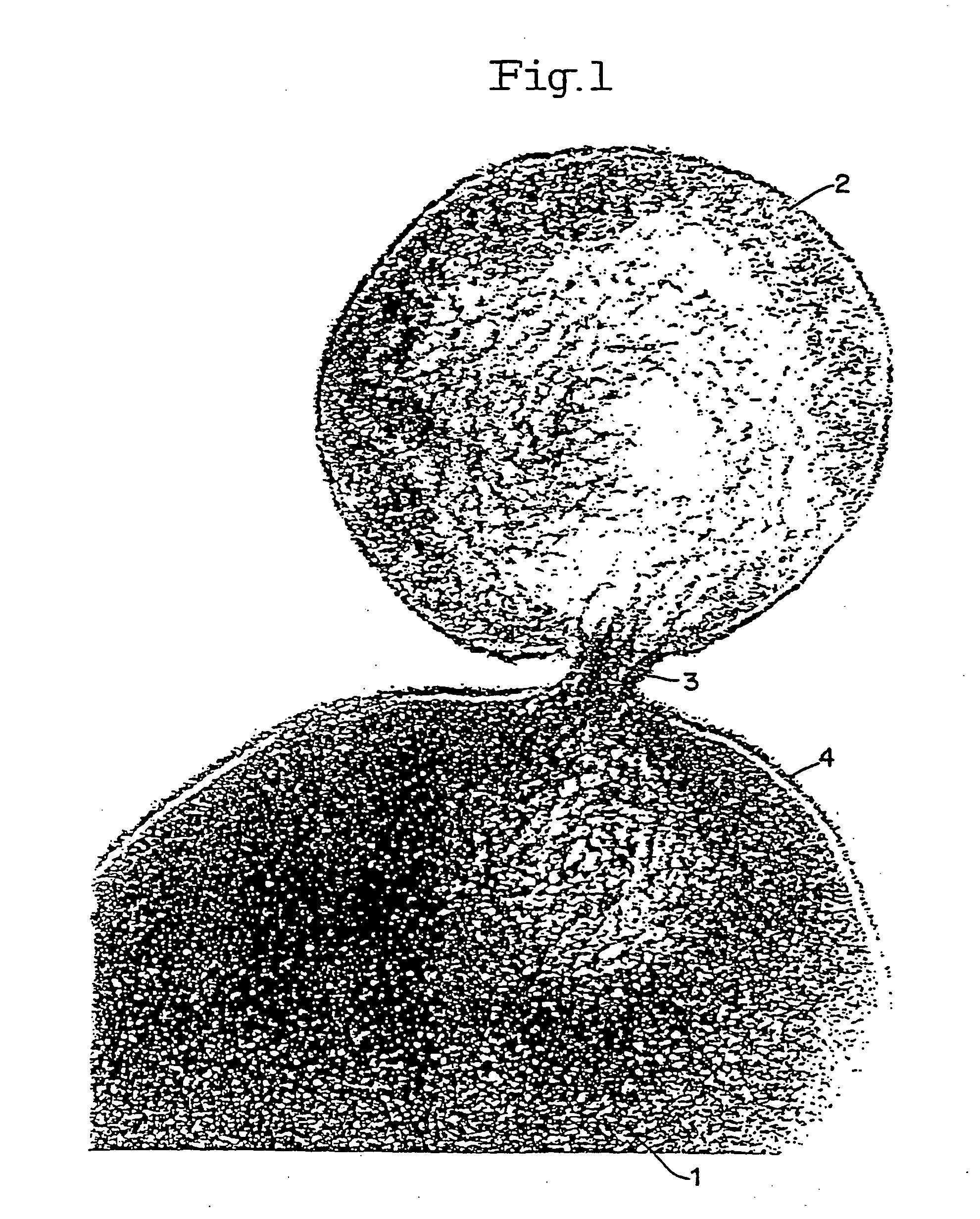Use of bacterial phage-associated lysing proteins for preventing and treating bacterial infections in humans, animals and fowl
a technology of phage-associated lysing proteins and phages, which is applied in the field of treating bacterial infections, can solve the problems of antibiotic resistance in these organisms, non-functional phages, and drug resistant bacteria development, and achieve the effect of changing protein properties
- Summary
- Abstract
- Description
- Claims
- Application Information
AI Technical Summary
Benefits of technology
Problems solved by technology
Method used
Image
Examples
example 1
[0438] Harvesting Phage Associated Lytic Enzyme
[0439] Group C streptococcal strain 26RP66 (ATCC #21597) or any other group C streptococcal strain is grown in Todd Hewitt medium at 37 degrees C. to an OD of 0.23 at 650 nm in an 18 mm tube. Group C bacteriophage (C1) (ATCC #21597-B1) at a titer of 5,000,000 is added at a ratio of 1 part phage to 4 parts cells. The mixture is allowed to remain at 37 degrees C. for 18 min at which time the infected cells are poured over ice cubes to reduce the temperature of the solution to below 15 degrees C. The infected cells are then harvested in a refrigerated centrifuge and suspended in 1 / 300th of the original volume in 0.1M phosphate buffer, pH 6.1 containing 5 mm dithiothreitol and 10 ug of DNAase. The cells will lyse releasing phage and the lysin enzyme. After centrifugation at 100,000 g for 5 hrs to remove most of the cell debris and phage, the enzyme solution is aliquoted and tested for its ability to lyse Group A Streptococci.
[0440] The nu...
example 2
[0444] A number of chimeric lytic enzymes have been produced and studied. Gene E-L, a chimeric lysis constructed from bacteriophages phi X174 and MS2 lysis proteins E and L, respectively, was subjected to internal deletions to create a series of new E-L clones with altered lysis or killing properties. The lytic activities of the parental genes E, L, E-L, and the internal truncated forms of E-L were investigated in this study to characterize the different lysis mechanism based on differences in the architecture of the different membranes spanning domains. Electron microscopy and release of marker enzymes for the cytoplasmic and periplasmic spaces revealed that two different lysis mechanisms can be distinguished depending on penetration of the proteins of either the inner membrane or the inner and outer membranes of the E. coli. FEMS Microbiol. Lett. Jul. 1, 1998, 164(1); 159-67.
[0445] Also, an active chimeric cell wall lytic enzyme (TSL) is constructed by fusing the region coding fo...
example 3
[0446] Isolation of the Pal Lytic Enzyme:
[0447] Recombinant E. coli DH5 (PMSP11) containing the pal lytic enzyme gene were grown overnight, induced with lactose, pelleted, resuspended in phosphate buffer, and broken by sonication. After centrifugation, the Pal enzyme in the supernatant was purified in a single step using a DEAE-cellulose column with elution by choline. Protein content was analyzed with the Bradford method. Using this method, a single protein band was identified by SDS-PAGE.
PUM
| Property | Measurement | Unit |
|---|---|---|
| Volume | aaaaa | aaaaa |
| Time | aaaaa | aaaaa |
| Power | aaaaa | aaaaa |
Abstract
Description
Claims
Application Information
 Login to View More
Login to View More - R&D
- Intellectual Property
- Life Sciences
- Materials
- Tech Scout
- Unparalleled Data Quality
- Higher Quality Content
- 60% Fewer Hallucinations
Browse by: Latest US Patents, China's latest patents, Technical Efficacy Thesaurus, Application Domain, Technology Topic, Popular Technical Reports.
© 2025 PatSnap. All rights reserved.Legal|Privacy policy|Modern Slavery Act Transparency Statement|Sitemap|About US| Contact US: help@patsnap.com



